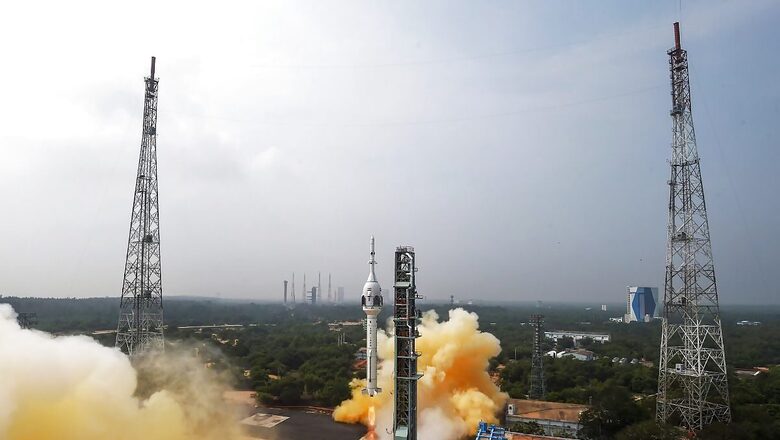
views
The Gaganyaan crew escape module made a successful landing in the Bay of Bengal, completing the first unmanned flight test conducted by ISRO at Sriharikota on Saturday. After an initial glitch, the TV-D1 test flight lifted off in the second attempt.
The test vehicle, which was carrying crew safety related payloads and was launched to demonstrate the performance of the crew escape system, could not take off in its first attempt due to an anomaly, ISRO said. The liftoff was then rescheduled after identifying and fixing the issue, it added.
Here’s all you need to know about how ISRO conducted the unmanned test vehicle flight for India’s first human space programme:
- ISRO chief said the failed liftoff in the first attempt happened because the engine ignition of the TV-D1 rocket did not happen in the course of time.
- The rocket suffered delays twice in a total of 45 minutes due to which it failed to lift off from the spaceport at Sriharikota at 8.45 am. A “hold” signal flashed across the screens at the Satish Dhawan Space Centre while the final countdown was on.
- Somanath said there was a smooth air lift and automatic launch sequence leading up to the command to lift off, “but the engine ignition did not happen in the nominal course due to anomaly”. The ground support computer doing this function withheld the launch in view of the anomaly observed, he added.
- The ground computer detected non-conformance, which was identified and corrected quickly. The ISRO chief said the vehicle went slightly above the speed of sound, before it initiated the crew escape system.
- While everything inside the vehicle was safe, ISRO said it analysed the anomaly and fixed it leading to a successful second attempt. The revised launch schedule was announced after analysing what went wrong. Somanath further said ISRO will collect more data and further conduct an analysis after the recovery of the crew modules from the sea.
Later, mission director S Sivakumar said: “This is like a never before attempt. It is like a bouquet of three experiments put together. We have now seen the characteristics of all three systems with what we wanted to test through this experiment or this mission. The test vehicle, the crew escape system, the crew module everything, we have perfectly demonstrated in the first attempt… All the systems performed well… We had been at penance for the last 3 to 4 years and the D-day was today… We are very happy to be able to do it on the very first attempt.”
“I am very happy to announce the successful accomplishment of the TV-D1 mission. The purpose of this mission was to demonstrate the crew escape system for the Gaganyaan programme through a test vehicle demonstration in which the vehicle went up to a Mach number, which is slightly above the speed of sound and initiated an abort condition for the crew escape system to function. The crew escape system took the crew module away from the vehicle and subsequent operations including the touchdown at the sea have been very well accomplished. And we have a confirmation of the data for all of this…” Somanath said.
(With PTI inputs)














Comments
0 comment